Istanbul isn’t just a city—it’s a living, breathing palimpsest of civilizations, where the echoes of Byzantium, Rome, and the Ottoman Empire blend seamlessly with the hum of modern life. One moment, you’re tracing the footsteps of emperors through the ancient corridors of Hagia Sophia, and the next, you’re sipping çay in a hidden courtyard, surrounded by the scent of saffron and the murmur of history. But to truly understand Istanbul, you need a guide who doesn’t just know the city, but feels it in his bones.
Enter Şerif Yenen, a name synonymous with cultural exploration, storytelling, and deep expertise in Turkey’s heritage. With 37 years of experience, Şerif has devoted his life to unraveling Istanbul’s lesser-known narratives, from the forgotten tunnels beneath its streets to the secrets held within its bustling bazaars. As the author of Turkish Odyssey, the first English-language travel guide on Turkey written by a local expert, he has been the bridge between past and present for countless travelers.
Istanbul is more than a destination—it’s a living storybook, where every street, every monument, and every spice-scented bazaar tells a tale. But to truly see the city, you need to look beyond the obvious. In this exclusive interview, we sit down with Şerif to explore the pivotal moments that shaped Istanbul, its hidden architectural marvels, and the untold stories that make this city endlessly fascinating. Whether you’re a seasoned traveler or a first-time visitor, Şerif’s insights will transform the way you see Istanbul. Are you ready to uncover the city’s best-kept secrets?
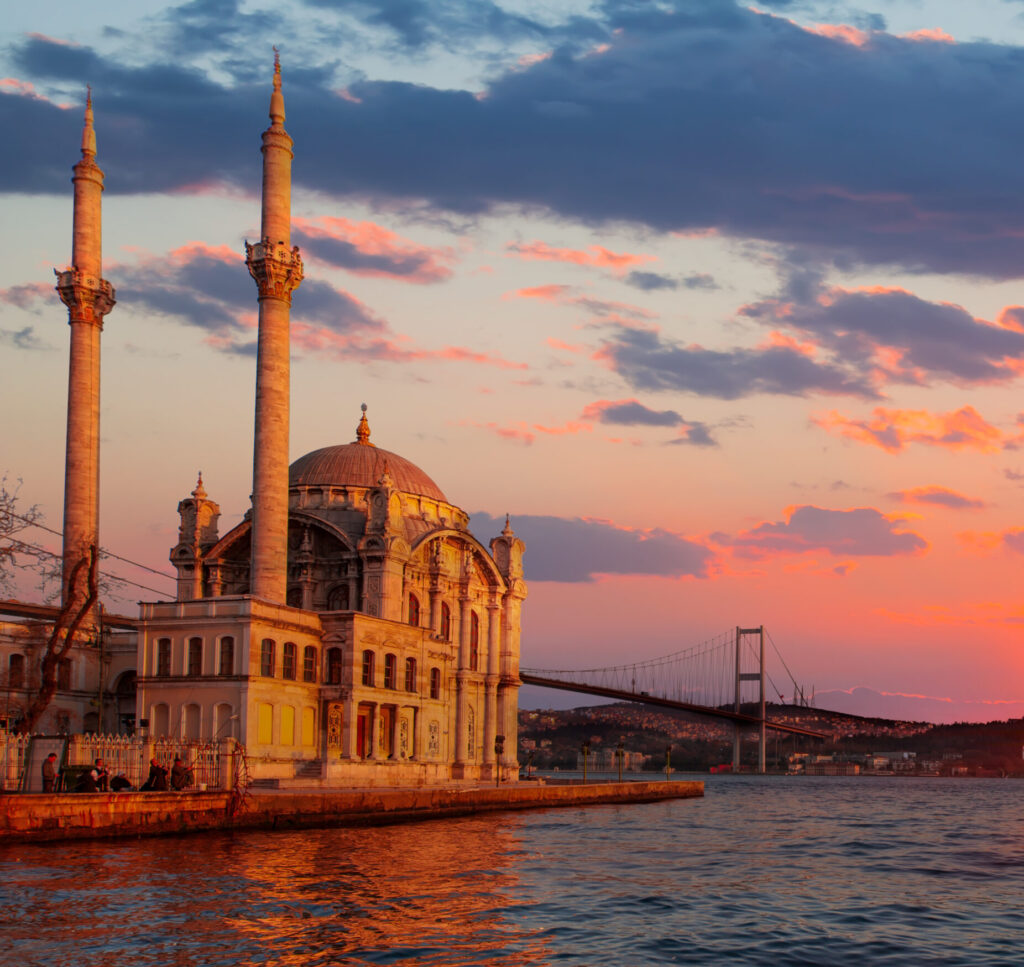
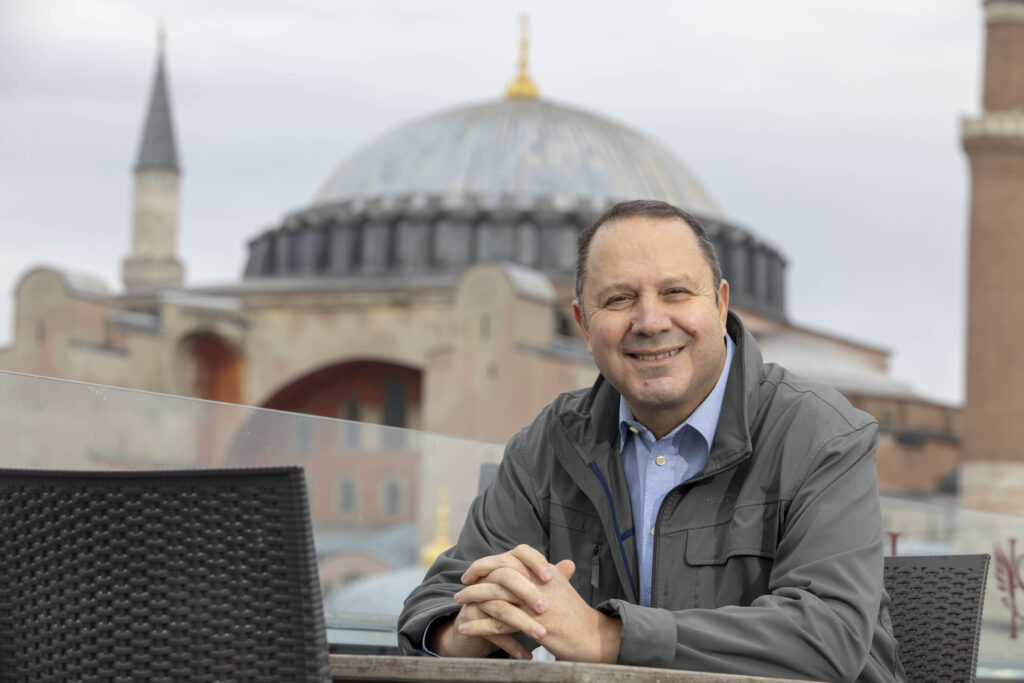
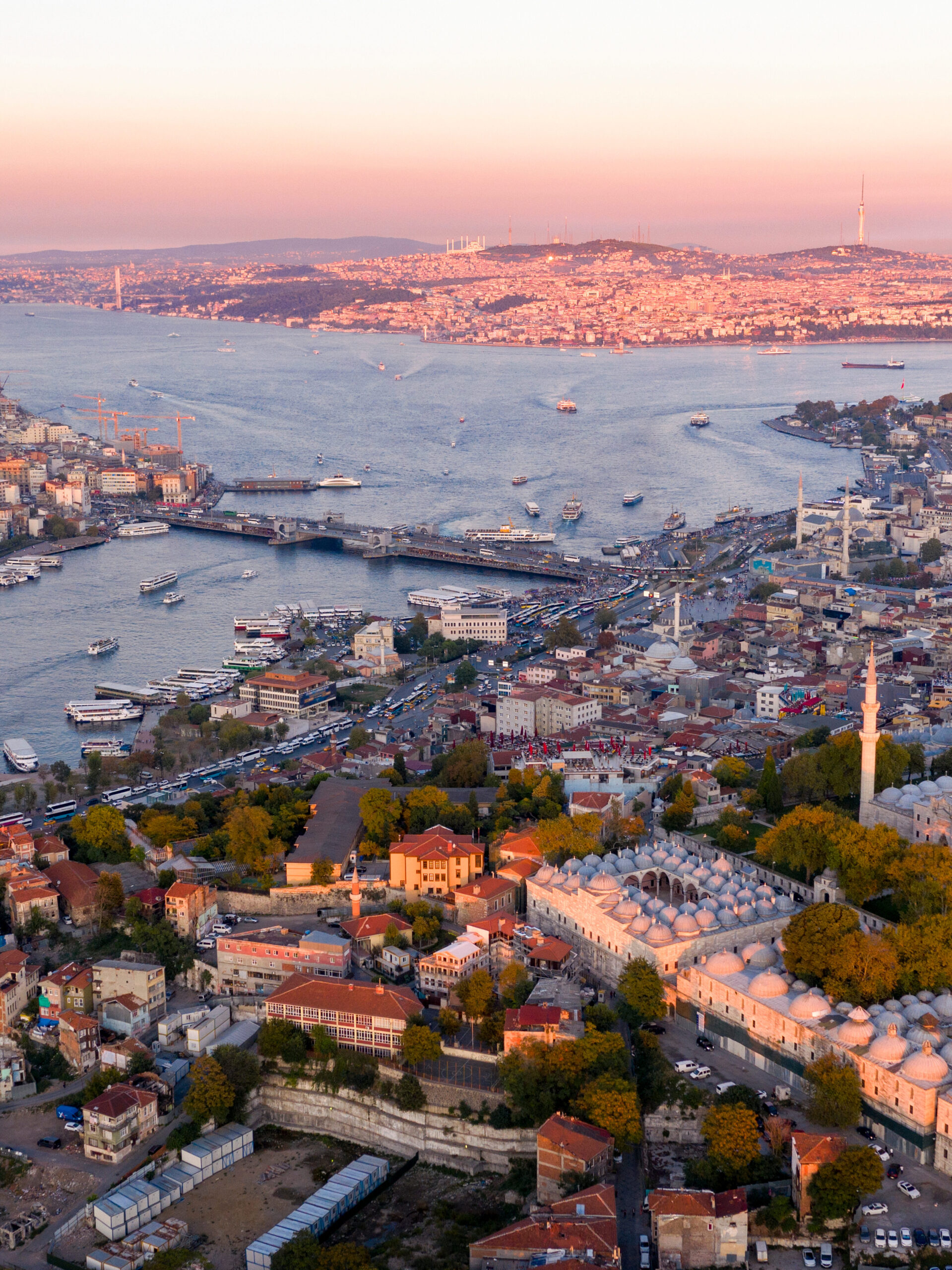
Istanbul’s Defining Moments in History: The Events That Shaped the City’s Character
Istanbul has witnessed the rise and fall of empires. In your research and experience, is there a moment in the city’s history that you believe defines its true character?
Şerif Yenen: It’s hard to capture Istanbul’s true essence in a single moment—it has been a crossroads of cultures, empires, and beliefs for thousands of years. But if there’s one thing that defines this city, it’s its remarkable ability to evolve while carrying its past forward. Recent archaeological discoveries have actually rewritten parts of Istanbul’s history. For years, we believed the city’s story began with a Greek colony in the 7th century BCE. Then, during excavations for the Yenikapı metro station, archaeologists uncovered remains from the Neolithic era, dating back to 6000 BCE! These findings prove that Istanbul has been continuously inhabited for millennia, drawing people to its unique location like a magnet. One of the most pivotal moments came in 324 CE when Emperor Constantine, fresh from victory at the Battle of Chrysopolis, decided to move the capital of the Roman Empire here. Byzantion, once a modest town, was suddenly transformed into “Nova Roma”—though the world soon came to know it as Constantinople. This was more than just a name change. It marked the beginning of the city’s rise as one of the greatest capitals in history. Constantine’s support for Christianity and Emperor Theodosius I’s later declaration of Christianity as the empire’s official religion solidified Constantinople’s place as the heart of Christianity. The city’s religious and cultural landscape shifted dramatically, with pagan temples destroyed or repurposed as churches and new monumental structures shaping its skyline. The Great Schism of 1054 would further cement its role, dividing Christianity into Roman Catholicism and Eastern Orthodoxy, with Constantinople leading the latter. Then came 1204, a turning point few could have predicted. The Fourth Crusade took an unexpected detour when Latin Crusaders, instead of marching to Jerusalem, turned on Constantinople. They sacked the city, established the short-lived Latin Empire, and forced the Byzantines into exile. Although the Byzantines reclaimed their capital in 1261, the damage had been done—the empire was a shadow of its former self, leaving Constantinople vulnerable to future conquests.
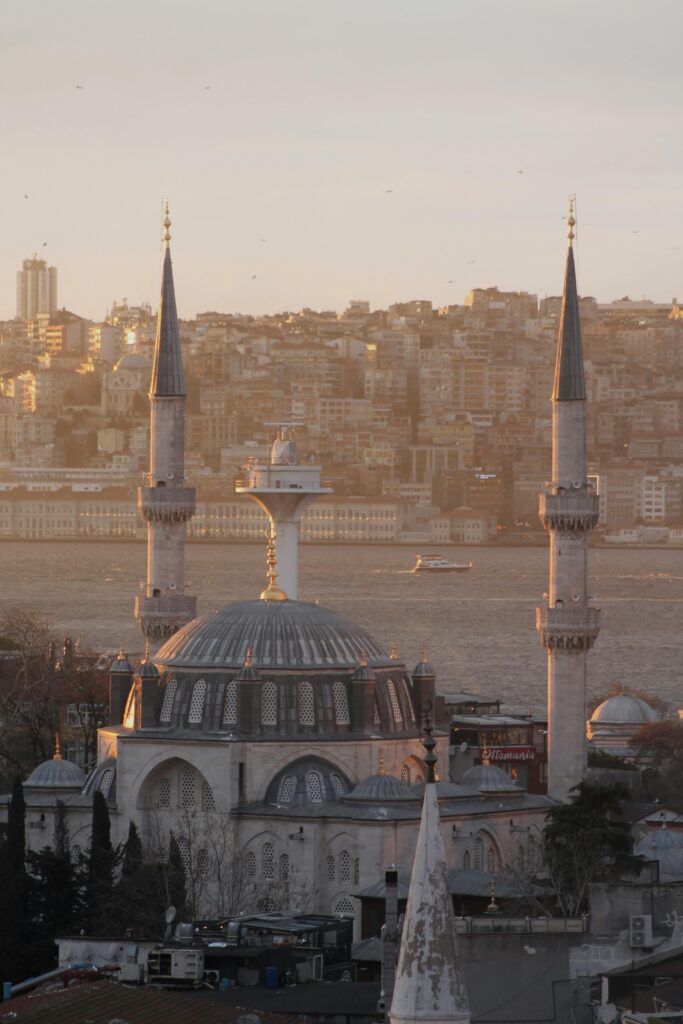
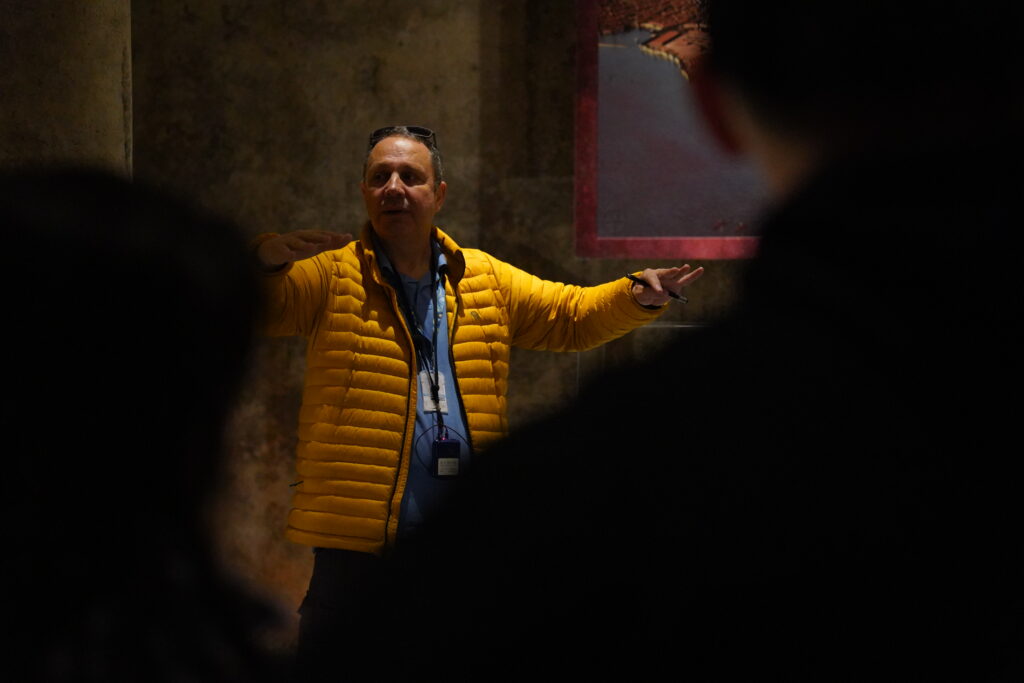
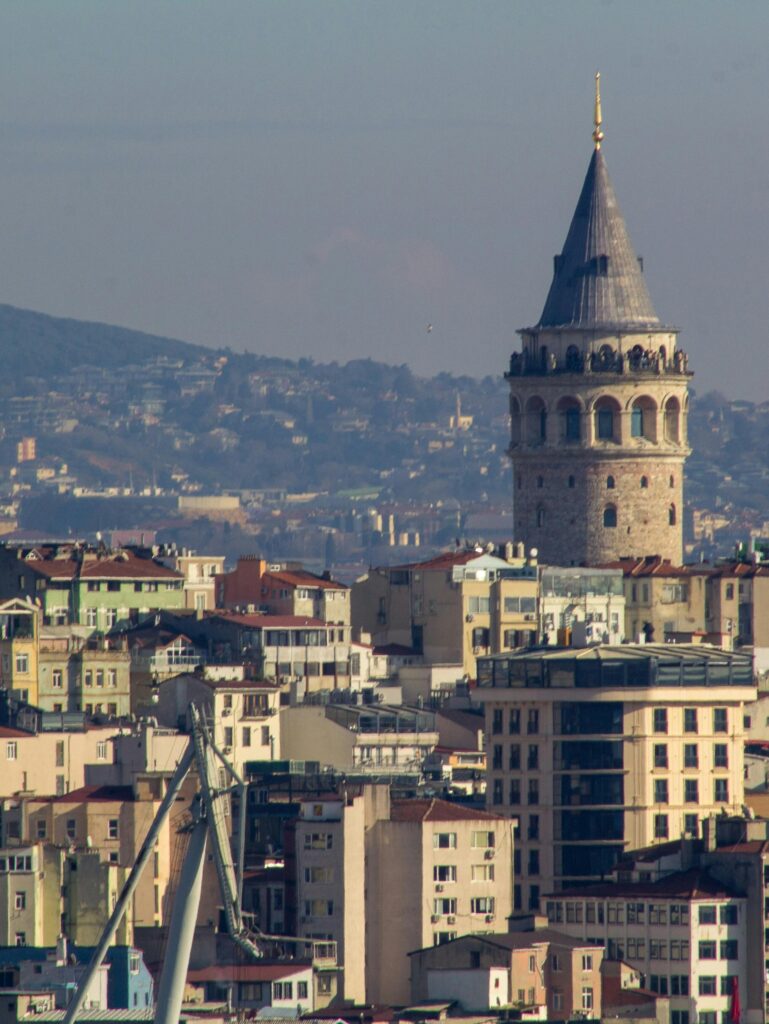
And then, of course, came 1453. The conquest of Constantinople by Sultan Mehmed II wasn’t just a military victory; it was a moment that reshaped world history. The fall of the Byzantine Empire signaled the rise of the Ottomans as a global power and marked the transition from the Middle Ages to the early modern era. But what’s truly fascinating is how Mehmed II approached his conquest. Instead of erasing the city’s past, he embraced it. He repopulated Constantinople, encouraged cultural and religious diversity, and ensured that Muslims, Christians, Armenians, and Jews could coexist under the Ottoman millet system, which granted autonomy to different religious communities. He even saw himself as the rightful heir to Rome, taking on the title Kayser-i Rum (Caesar of Rome), symbolizing the continuity of the Roman imperial tradition under Ottoman rule. Istanbul’s true character lies in its resilience and adaptability. It has reinvented itself time and time again, yet it has never lost the layers of history that make it so unique. Even today, it remains a bridge between East and West, a city that carries the legacy of Byzantium, Rome, and the Ottoman Empire into the modern era. This ability to transform without forgetting its roots is what makes Istanbul one of the most fascinating cities in the world.
Hagia Sophia: More Than Just a Monument
Many people visit Hagia Sophia, but few truly understand its deeper significance. From your perspective, what is the most overlooked or misunderstood aspect of this monument?
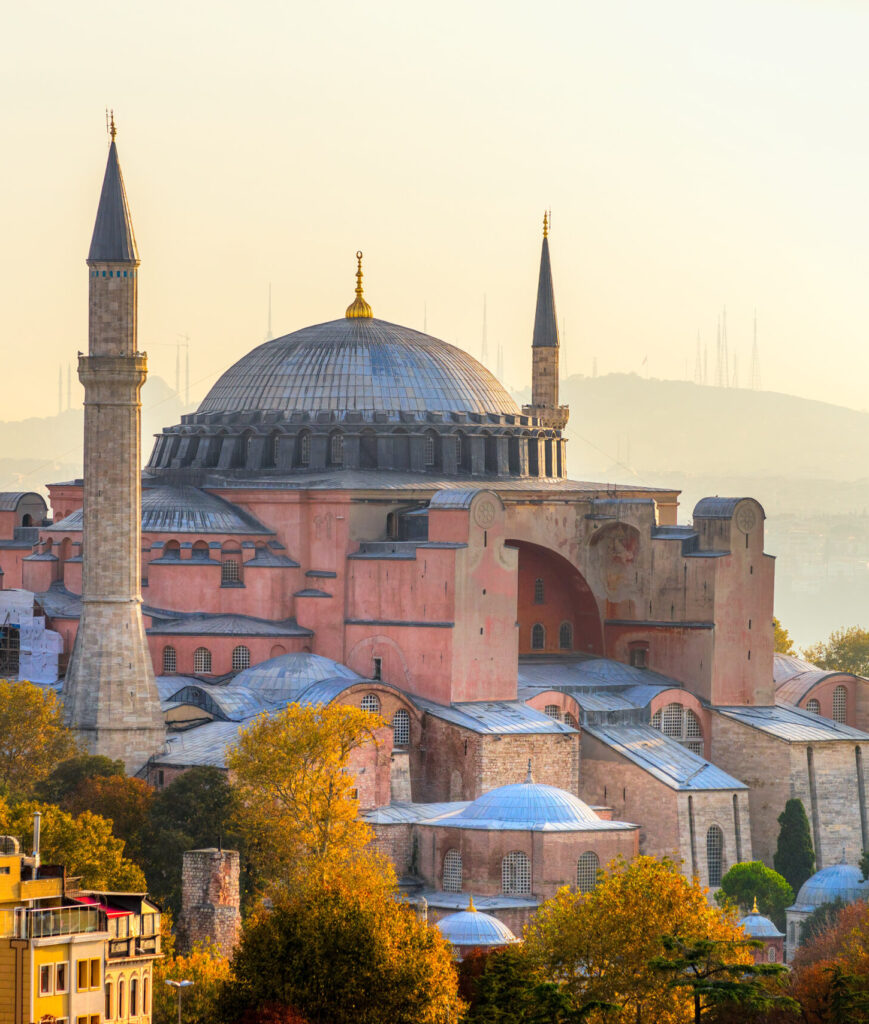
Şerif Yenen: Hagia Sophia is a place where history, faith, and architectural brilliance converge. Yet, everyone who looks at it sees something different. A devout Christian may view it solely as a church, while a devout Muslim may focus only on its Islamic heritage. But the real magic of Hagia Sophia is that it transcends these perspectives—it is a monument that belongs to all of humanity. Few buildings in the world can match the historical and cultural weight of Hagia Sophia. For over 1,500 years, it has stood as a place of worship, an achievement that few structures of its age can claim. The sheer number of events it has witnessed—from the glory of the Byzantine Empire to the rise of the Ottoman Empire—makes it unparalleled. Architecturally, it is nothing short of a masterpiece. When it was completed in the 6th century, it had the largest dome in the world, a record it held for nearly 1,000 years.
Even today, its dome is among the largest ever built. Imagine a structure as tall as a 17-story building, constructed entirely by hand, centuries before modern engineering—an incredible testament to human ingenuity. For 916 years, Hagia Sophia was the heart of Christianity, the greatest cathedral of its time. Then, in 1453, Sultan Mehmed II conquered Constantinople and converted it into a mosque. But rather than destroying it, he honored it. One of his first acts as ruler of the city was to visit Hagia Sophia in admiration. Unlike many conquerors who erased the identity of sacred places, he chose to preserve its grandeur. He even kept its original name, Hagia Sophia, meaning “Holy Wisdom” in Greek. Over the centuries, Hagia Sophia has evolved, but it has always been respected and protected. It is more than just a church or a mosque—it is a universal symbol of cultural continuity, a bridge between civilizations. Our responsibility today is to pass it on to future generation
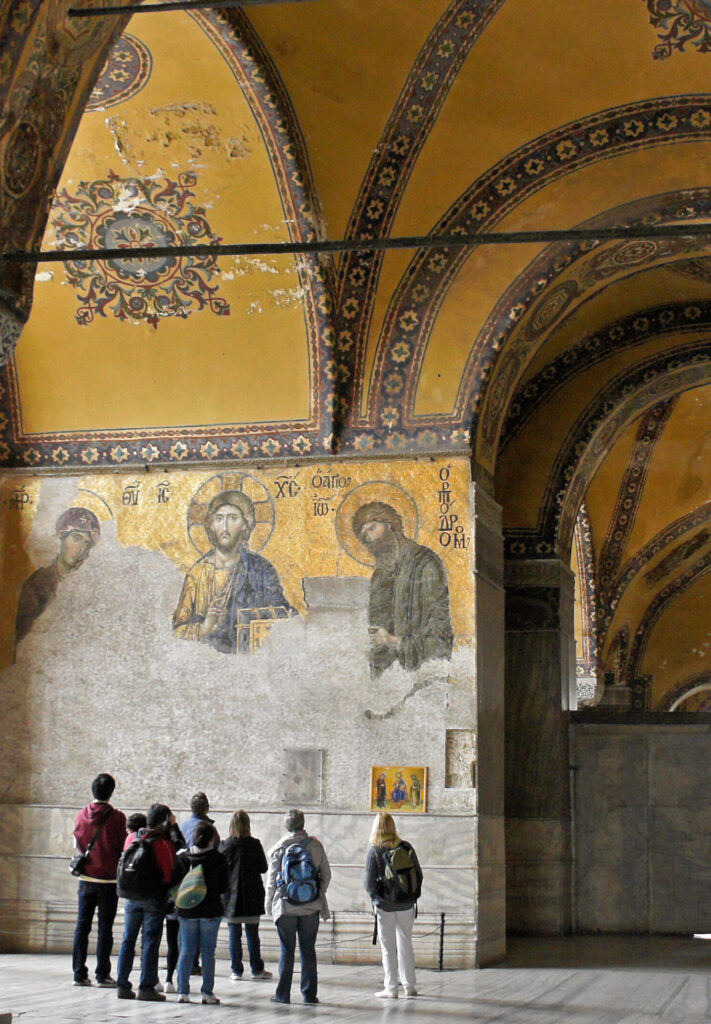
Hagia Sophia vs. The Blue Mosque: A Dialogue of Civilizations
The Blue Mosque is often compared to Hagia Sophia, but in your expert opinion, do they serve different symbolic purposes? If so, how?
Şerif Yenen: Rather than rivals, Hagia Sophia and the Blue Mosque complement each other, telling two sides of Istanbul’s rich story. To understand the Blue Mosque’s significance, it’s essential to recognize an important Ottoman tradition: Sultans saw it as their duty to commission grand mosques, not only as acts of devotion but also as a legacy to be remembered through prayers and goodwill. Many funded these projects themselves, often giving the mosques their own names. Sultanahmet Camii, better known today as the Blue Mosque, is a prime example of this tradition. Built in the 17th century under Sultan Ahmed I, its famous nickname comes from the breathtaking blue Iznik tiles that adorn its interior. Istanbul’s seven hills played a key role in Ottoman city planning—sultans preferred to build their mosques on elevated ground to shape the city’s skyline. By the time Sultan Ahmed I planned his mosque, most of the prime locations had already been taken. The last major site available was right across from Hagia Sophia. Some assume this placement was meant to compete with or overshadow Hagia Sophia, but in reality, it was a conscious decision to create harmony, not rivalry. Hagia Sophia stands as a symbol of Byzantine grandeur, while the Blue Mosque represents the majesty of the Ottoman era. Together, they engage in an architectural conversation, reflecting the layers of history and the seamless blending of civilizations that define Istanbul.
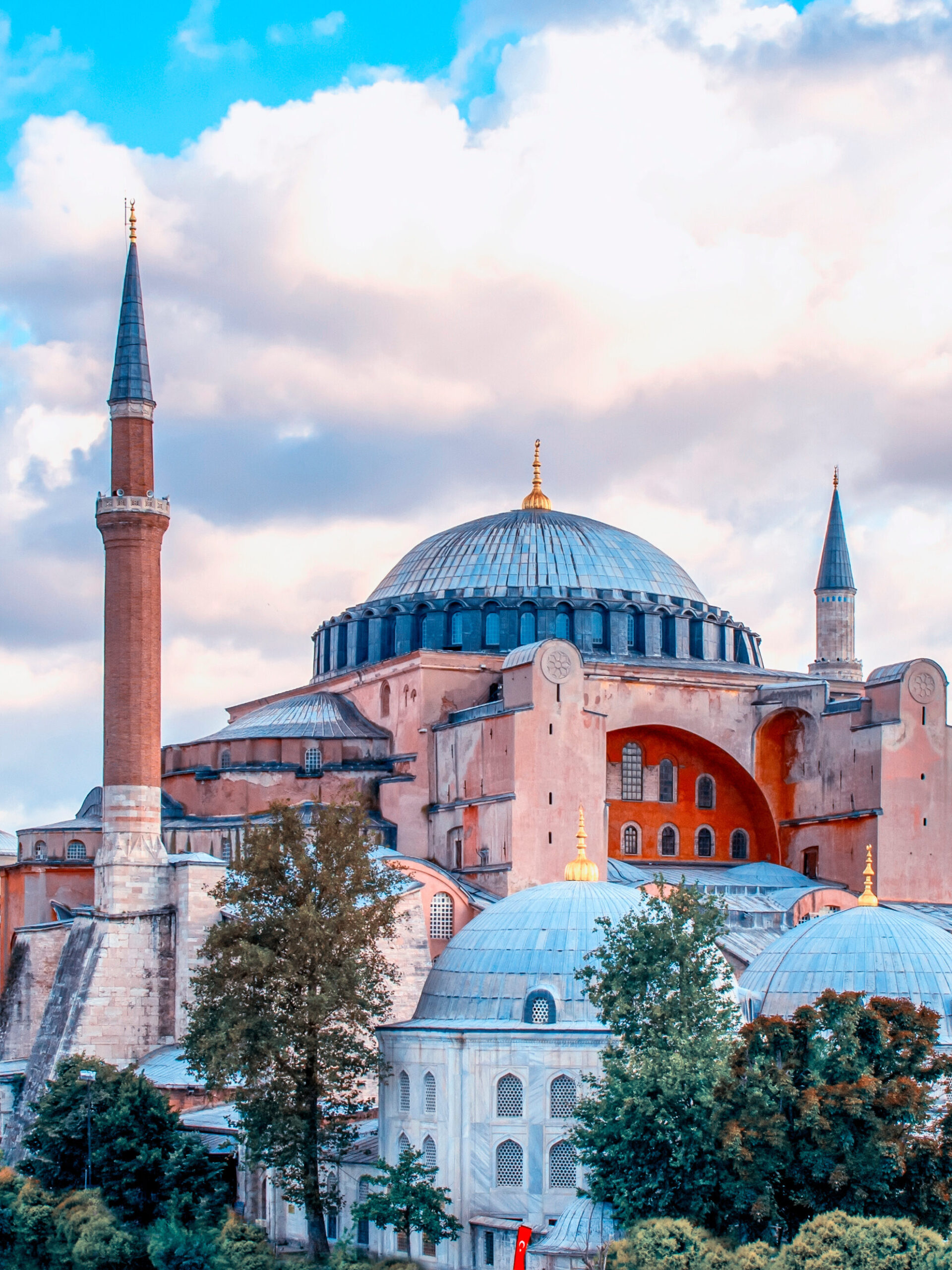
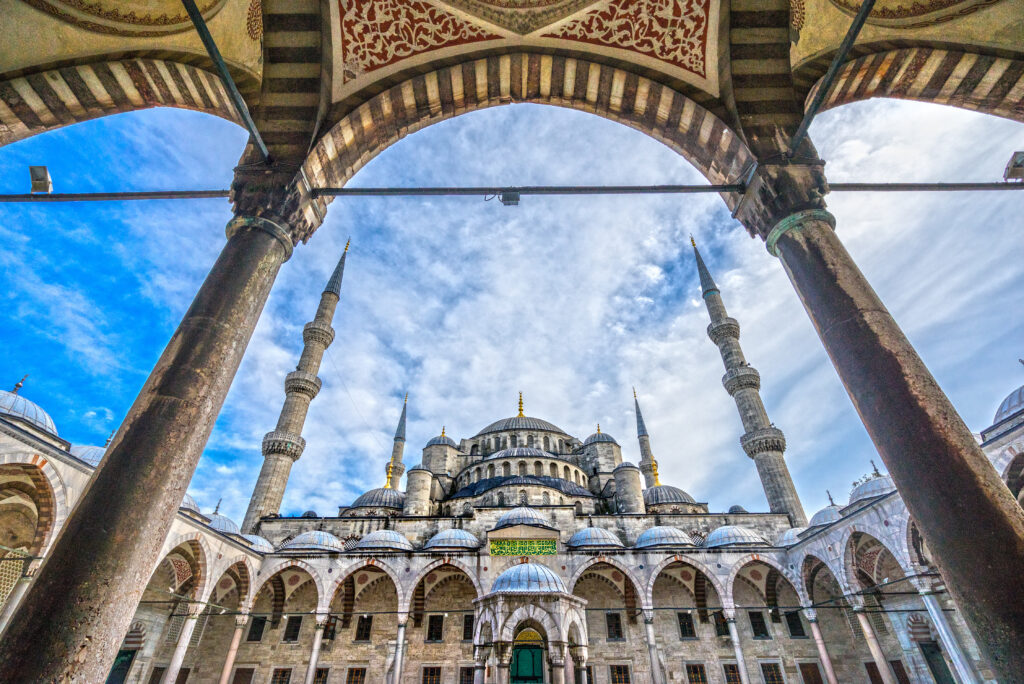
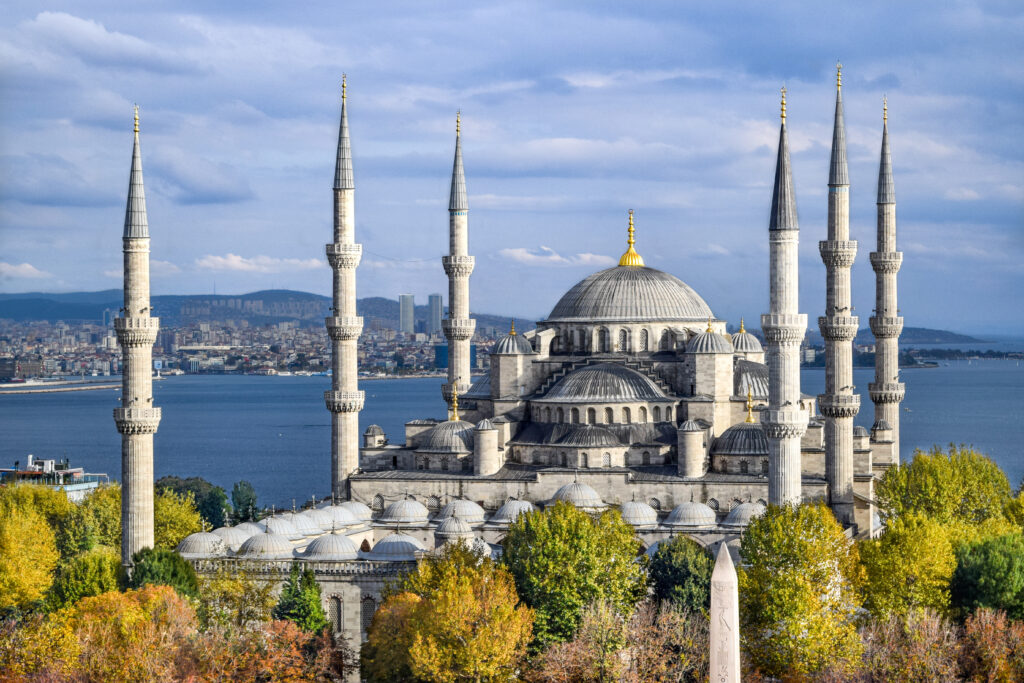
Hidden Architectural and Cultural Marvels
You’ve studied Istanbul’s architecture deeply. What is one structure—famous or not—that you believe holds a secret story most people never hear?
Şerif Yenen: One of the most intriguing aspects of Istanbul’s architecture lies beneath the surface—quite literally. While many visitors are familiar with the grand Basilica Cistern (Yerebatan Sarnıcı), few realize that nearly 400 Byzantine-era cisterns were built long before the Ottomans arrived. So far, only about 170 have been discovered, with many more still hidden beneath the city, waiting to be unearthed. Unlike most cities of its time, Constantinople faced a unique challenge: it was a heavily fortified peninsula, constantly under siege. At its peak during the Byzantine era, the city housed nearly 500,000 people, yet its natural water sources were limited. To sustain such a vast population, an elaborate system of aqueducts was built to bring water from distant springs. However, enemies often targeted these water supplies during sieges, cutting off access to fresh water. The Byzantines responded with an ingenious solution—an underground network of massive cisterns that could store enough water to keep the city running for months, even under attack. The Basilica Cistern is the most famous of these, but what makes it truly remarkable is its unexpected beauty. Instead of being a purely functional water reservoir, it is lined with grand marble columns, some adorned with intricate carvings, Doric and Corinthian capitals, and even sculpted Medusa heads. But why put such artistic effort into an underground storage space? The answer lies in a fascinating historical shift. In the late 4th century, Emperor Theodosius I officially banned paganism and promoted Christianity. As a result, many pagan temples were dismantled, but rather than discarding their precious marble columns and statues, the Byzantines repurposed them. Many of these temple remnants found new life supporting the grand, cathedral-like interior of the Basilica Cistern. Repurposing was not made only in the Basilica Cistern but in almost all other various size cisterns. So, when you walk through the dimly lit, water-reflecting pathways of the Basilica Cistern, you’re not just stepping into a medieval water reservoir—you’re standing among remnants of ancient temples, witnessing a hidden chapter of Istanbul’s layered history.
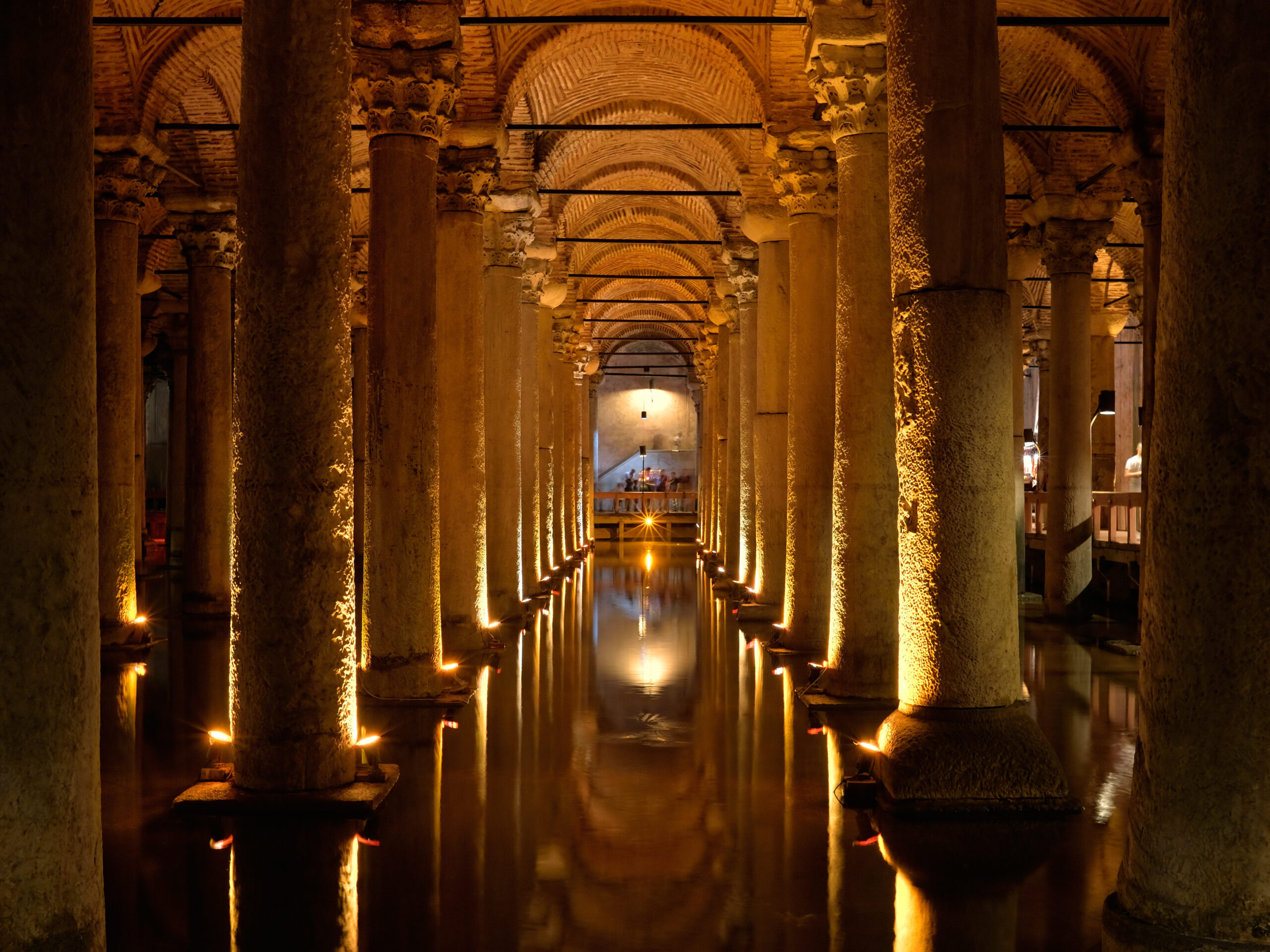

Topkapi Palace’s Hidden Corners: What Most Visitors Miss
Topkapi Palace is vast, and many visitors only see its most famous sections. Are there lesser-known areas or details that tell a fascinating story but often go unnoticed?
Şerif Yenen: Absolutely! But before diving into hidden gems, it’s important to understand what makes Topkapi Palace so unique. Unlike Istanbul’s other imperial residences—such as Dolmabahçe, Beylerbeyi, or Çırağan—Topkapi is in a league of its own. Ottoman palaces generally fall into two categories: the traditional Turkish-Islamic style, as seen in Topkapi, and the 18th- and 19th-century palaces influenced by European architecture, like Dolmabahçe and Beylerbeyi. What sets Topkapi apart is its deep connection to the Ottomans’ nomadic heritage. Unlike European-style palaces filled with chandeliers, gilded ballrooms, and heavy furniture, Topkapi was designed as an open-air complex, made up of wide courtyards and lush gardens. There were no grand dining tables or high-backed chairs; instead, palace residents sat on cushions and dined on the floor, a tradition that reflected their Central Asian roots. This emphasis on space, nature, and fluid movement is what gives Topkapi its distinct character, making it feel less like a rigid royal residence and more like a self-contained city. By the 19th century, Ottoman rulers embraced Western influences, constructing opulent palaces like Dolmabahçe and Beylerbeyi in the Baroque, Rococo, and Neoclassical styles. While undeniably stunning, these later palaces lost some of the cultural authenticity that Topkapi preserves. Today, Topkapi remains a living testament to the Ottomans’ unique way of life—one deeply tied to both tradition and practicality.
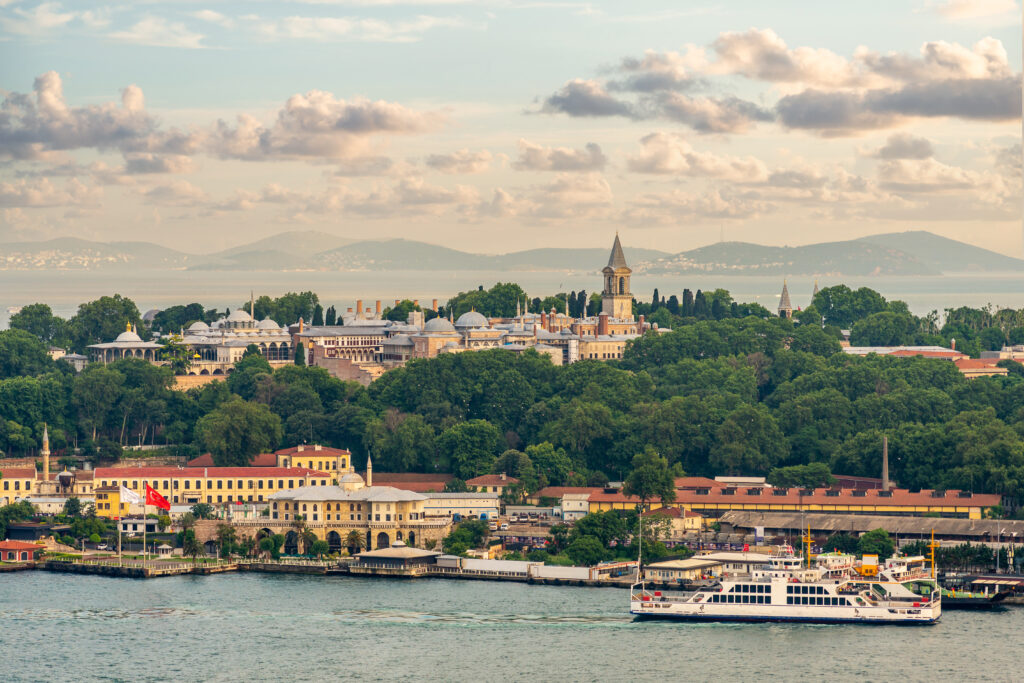
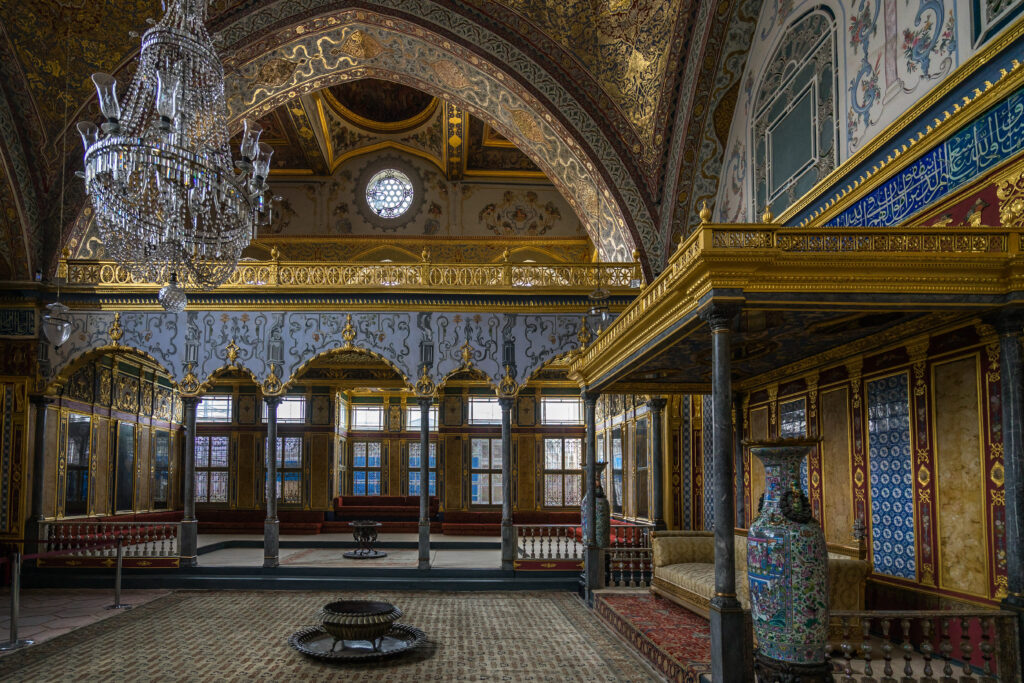
The Spice Bazaar: A Marketplace of History and Trade
Şerif Yenen: Bazaars and markets are a reflection of a city’s soul. You’ve explored countless ones—what is one market stall, spice, or item that tells a surprising story about Istanbul’s past?
Istanbul has always been a city of trade, with bustling markets at its heart. From the historic Grand Bazaar to today’s modern shopping districts, commerce has shaped its identity for centuries. But if there’s one place that truly captures the city’s rich trading history, it’s the Spice Bazaar (Mısır Çarşısı). Built in the 17th century, the Spice Bazaar gets its name from the fact that many of its goods—especially spices—arrived via Egypt (Mısır in Turkish). During the Ottoman era, it was common to build markets next to major mosques to generate income for religious and public services. The rent from the bazaar’s merchants helped fund the New Mosque (Yeni Cami), and to this day, the two stand side by side in the heart of the city. Its strategic location near the Golden Horn and the harbor made it a key hub for global trade. Spices from India and the Far East traveled through Egypt before reaching Istanbul, the meeting point of East and West.
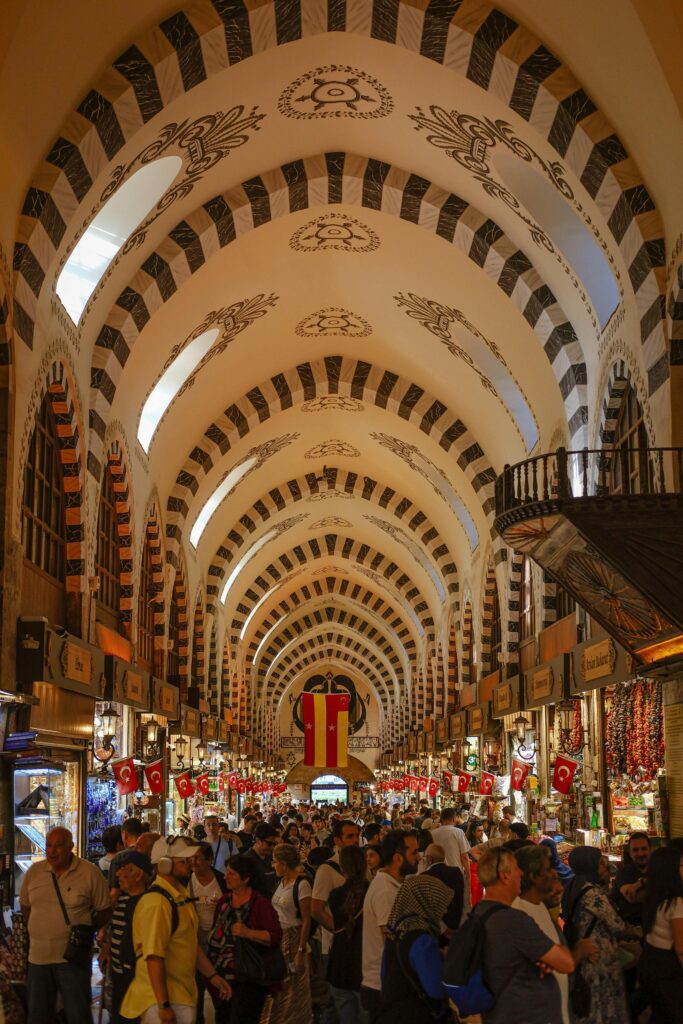
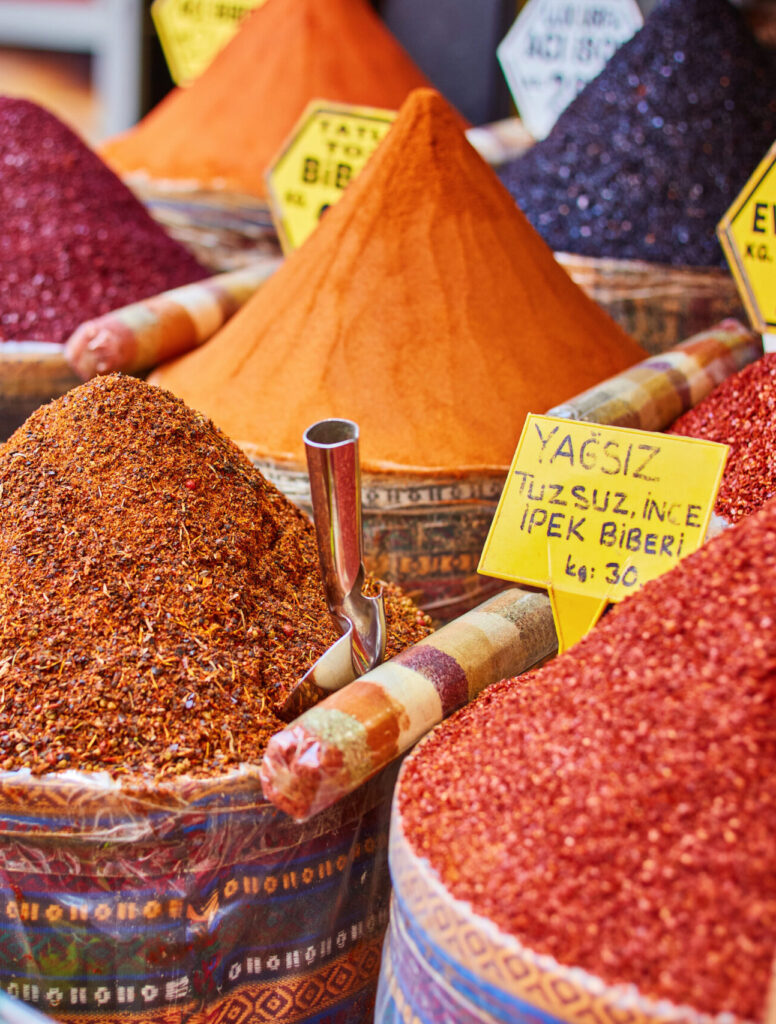
Since the Ottomans controlled vital trade routes, Istanbul became one of the most important spice markets in the world. Even today, the Spice Bazaar is a sensory delight, filled with vibrant colors, rich aromas, and a deep sense of history. Some of the must-try items that reflect both Ottoman cuisine and the city’s trading legacy include:
- Saffron & Cumin – Essential in Ottoman cooking and traditional medicine.
- Turkish Delight & Herbal Teas – Timeless treats with centuries-old traditions.
- Custom Spice Blends – Unique mixes for kebabs, seafood, soups, and even breakfast.
- Nuts & Dried Fruits – Turkey is the world’s top producer of hazelnuts, apricots and figs, and is a major exporter of pistachios—all of which are found in abundance here.
A Culinary Tale : Turkish Cuisine
Food is an essential part of Istanbul’s culture. In your opinion, which dish tells the best story about the city’s history and cultural mix?
Şerif Yenen: It’s hard to pick just one! Istanbul’s food scene is like the city itself—layered, diverse, and full of surprises. Every dish has a story, shaped by centuries of cultural influences from the Middle East, the Balkans, and Europe. What makes Istanbul’s cuisine so special is the sheer variety. You could enjoy a beautifully plated seafood feast by the Bosphorus, dive into a hearty plate of kebab in a historic lokanta, or grab a quick simit from a street vendor as you explore the city. And let’s not forget the countless hidden gems—family-run restaurants that have been perfecting the same recipes for generations. The best way to experience Istanbul? Taste your way through it. Try a little bit of everything—from the sizzling street food to the elegant mezes, from Ottoman-era stews to modern fusion dishes. Whether you’re a foodie or just someone who loves a good meal, this city will never stop surprising you.
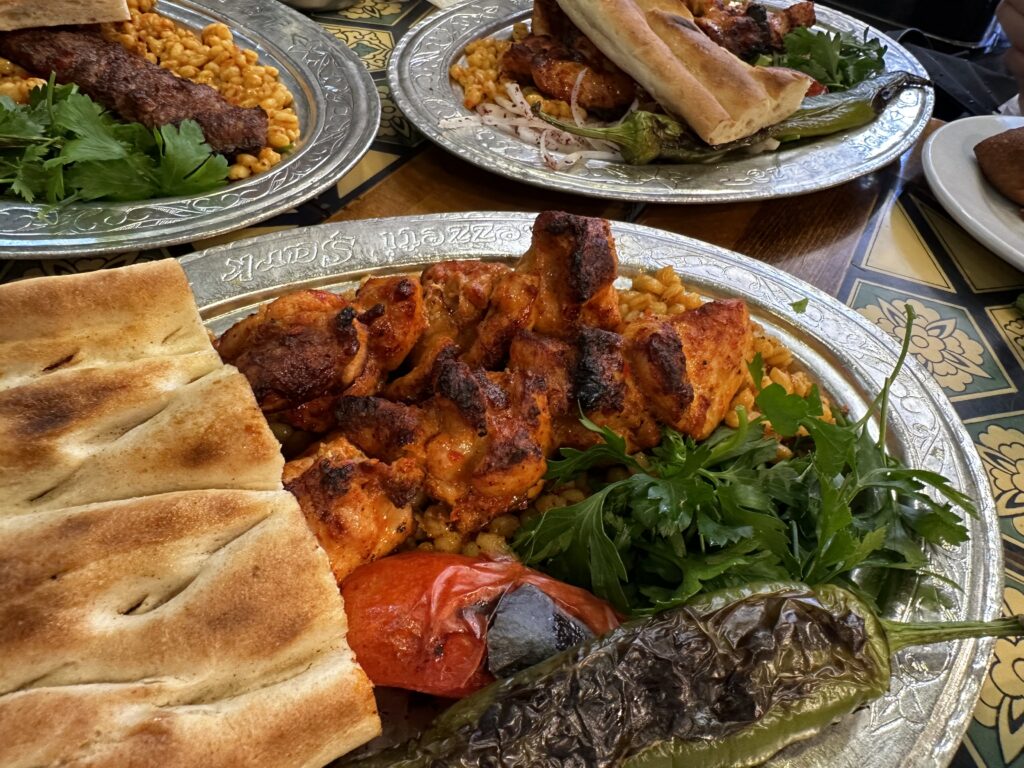
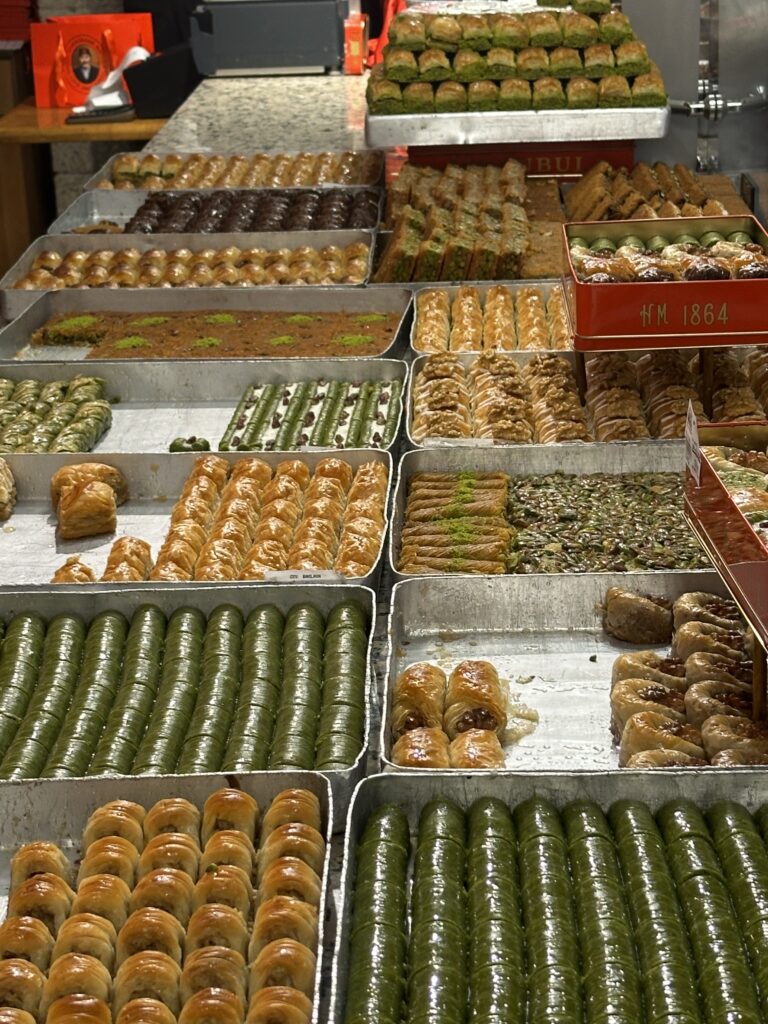

Beyond the Landmarks: Experiencing the True Soul of Istanbul
People often experience Istanbul only through its most famous landmarks. If someone truly wanted to “feel” the city beyond its tourist sites, what would you tell them to do? If someone wanted to see the most authentic, untouched side of the city, where would you take them?
Şerif Yenen: Istanbul is so much more than its famous landmarks—its true magic lies in the details, the hidden corners, and the daily rhythms of life beyond the tourist trails. While Hagia Sophia and the Blue Mosque are breathtaking, the city’s soul reveals itself in the quieter moments: a stroll through a historic neighborhood, a meal in a family-run lokanta, or a conversation with a local shopkeeper. To truly feel Istanbul, step off the beaten path. Explore the city’s underground cisterns or climb to hidden rooftops for unexpected views. Wander through vibrant markets where spices, textiles, and antiques tell their own stories. Follow the footsteps of Mimar Sinan, discovering his lesser-known yet equally magnificent architectural masterpieces scattered throughout the city. And don’t miss the Asian side—Kadıköy’s bustling streets and Kuzguncuk’s charming, village-like atmosphere offer a different, more laid-back perspective of Istanbul.
For an authentic blend of history and modern energy, Balat is a must-visit. Nestled within the ancient city walls, this neighborhood is a living testament to Istanbul’s multicultural past. Its colorful Ottoman houses, cobblestone alleys, and centuries-old synagogues and churches create a unique atmosphere. Though it has gained popularity in recent years, Balat still retains its local charm, with artisans, grocers, and longtime residents keeping its historic character alive. In Istanbul, the best experiences aren’t always planned—they happen when you let yourself get lost in the streets, embrace the unexpected, and take in the everyday magic of a city that has been reinventing itself for centuries.
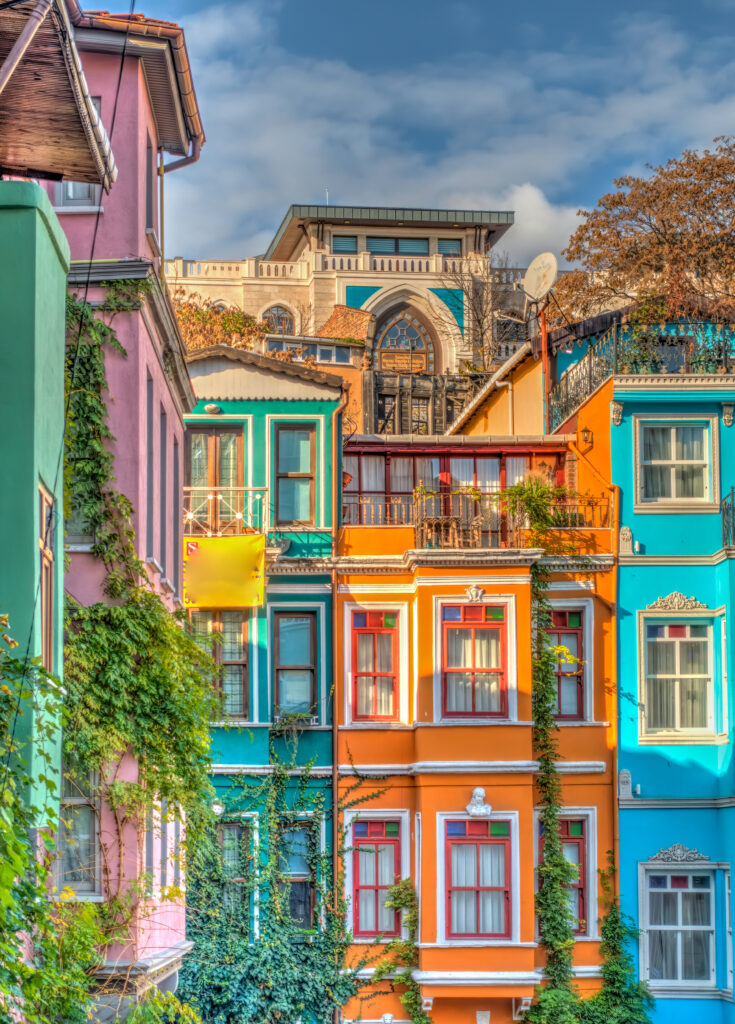
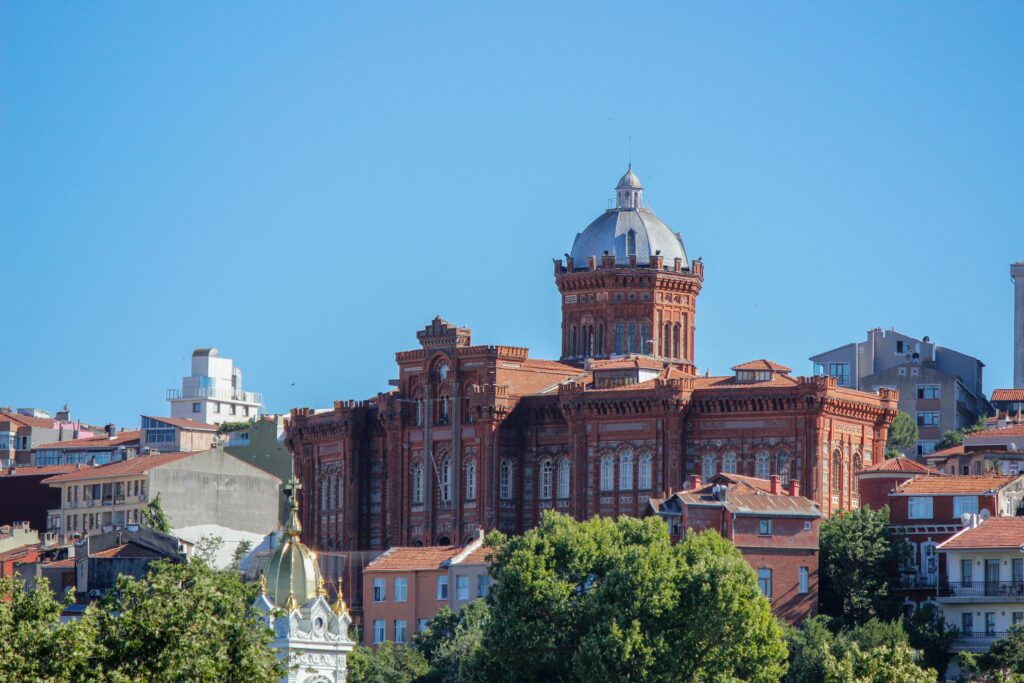
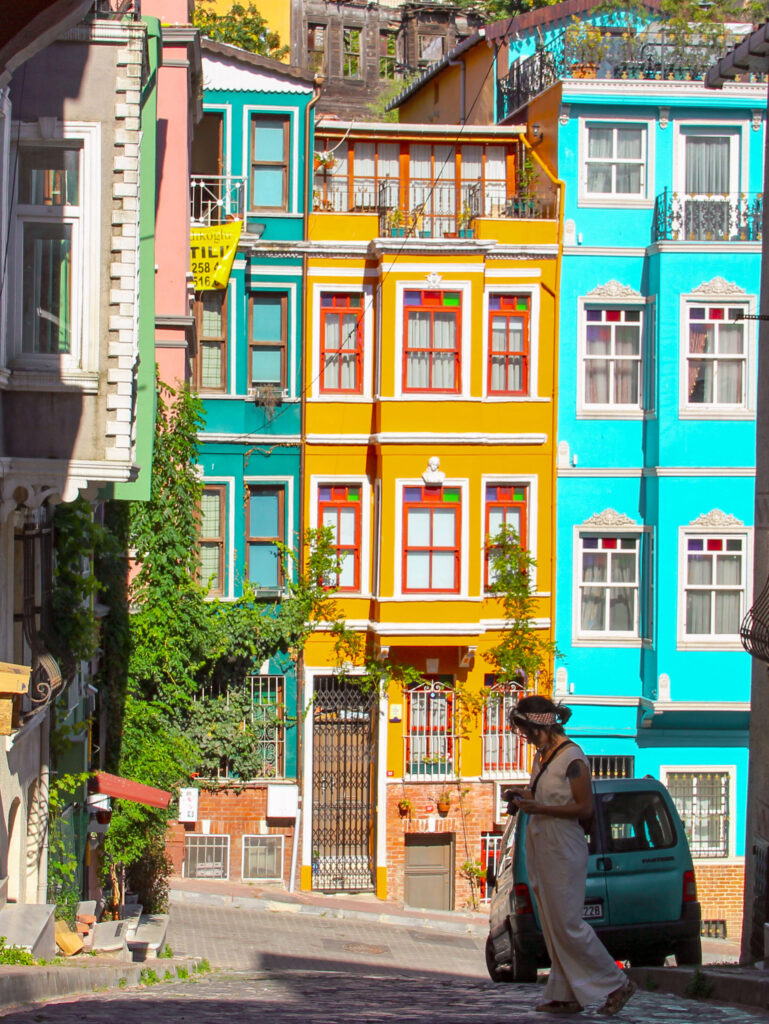
The Vanishing Arts of Istanbul: Craftsmanship at Risk
Istanbul is a city of craftsmanship. From your perspective, is there a particular artisan skill or tradition that is at risk of disappearing but deserves to be preserved?
Şerif Yenen: Absolutely. For centuries, Istanbul has been a center of master craftsmanship and artisanal heritage, and nowhere is this more evident than in the Grand Bazaar. As one of the largest and oldest covered markets in the world, it continues to uphold centuries-old Ottoman trade traditions with its 67 streets, 22 gates, and over 3,500 shops. During the Ottoman era, artisans worked within guilds, where masters and apprentices were grouped together in designated areas of the bazaar. This tradition still survives today, with weavers, leatherworkers, goldsmiths, and shoemakers all occupying their respective sections of the market. However, some of Istanbul’s most valuable crafts are now at serious risk of disappearing—especially copperware, silverwork and carpet making. The challenge is simple but devastating: a handmade copper or silver item may take a skilled artisan an entire week to produce, selling for around $150. Meanwhile, mass-produced machine-made versions of the same item—often imported from the Far East—can be sold for as little as $2. As demand for handmade goods declines, so does the number of artisans. If this trend continues, traditional craftsmanship could vanish within a few decades. The survival of these skills depends entirely on a conscious effort to preserve and value authentic, handmade products. For those who appreciate true craftsmanship, supporting Istanbul’s master artisans is more than just a purchase—it’s a way to protect a piece of history.
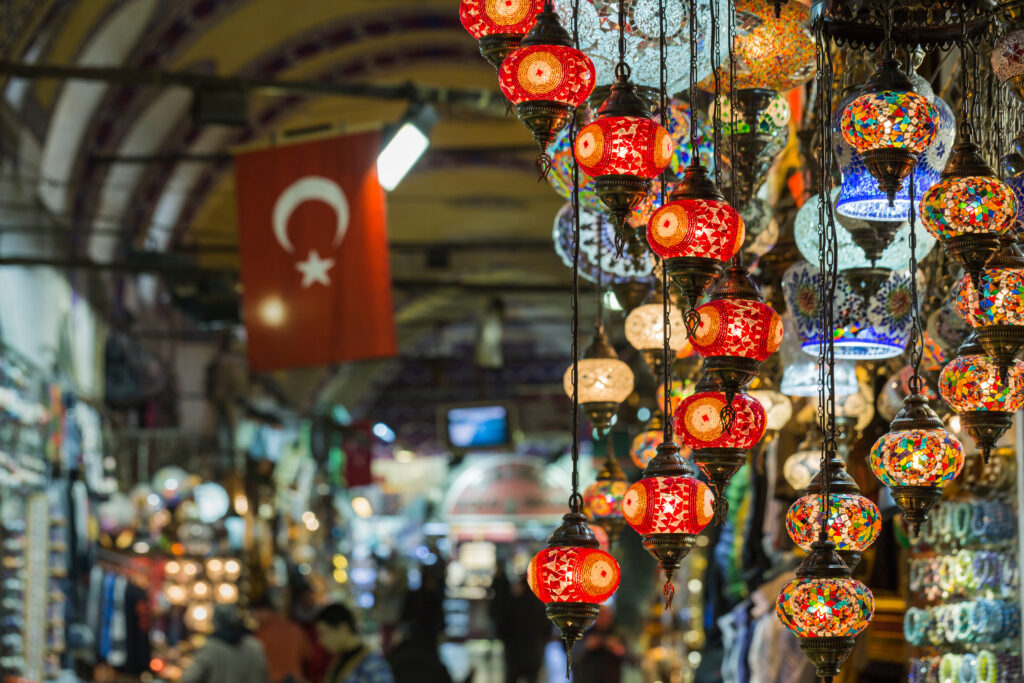
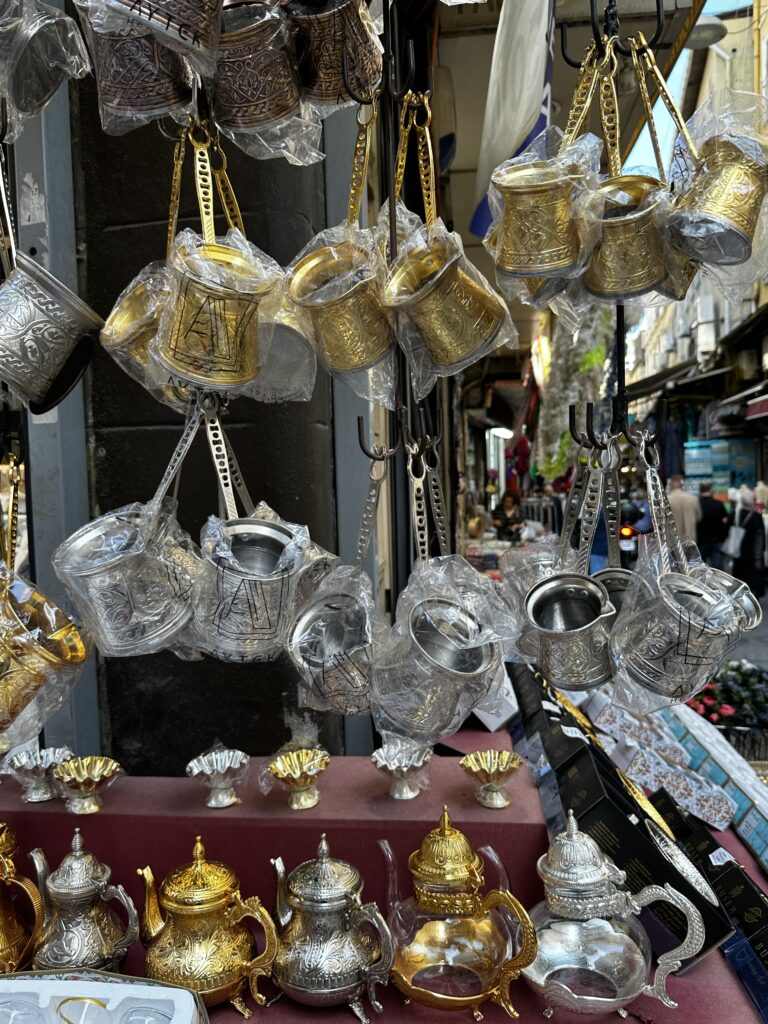

A City in Constant Transformation: A Guide’s Perspective
You’ve spent years guiding visitors through Istanbul’s complex layers of history. How has your own perception of the city evolved over time?
Şerif Yenen: Istanbul is a city that never stops unfolding. Its richness isn’t just in its past—it’s in its constant transformation, its ever-renewing energy. Few cities in the world are divided by the sea, and the Bosphorus gives Istanbul a beauty unlike anywhere else. Its skyline, stretching across two continents, is breathtaking. But beyond its monuments and postcard views, what truly makes Istanbul special is its dynamism. No two weeks in Istanbul are ever the same. The city is always in motion—sometimes for the better, sometimes for the worse—but never standing still.
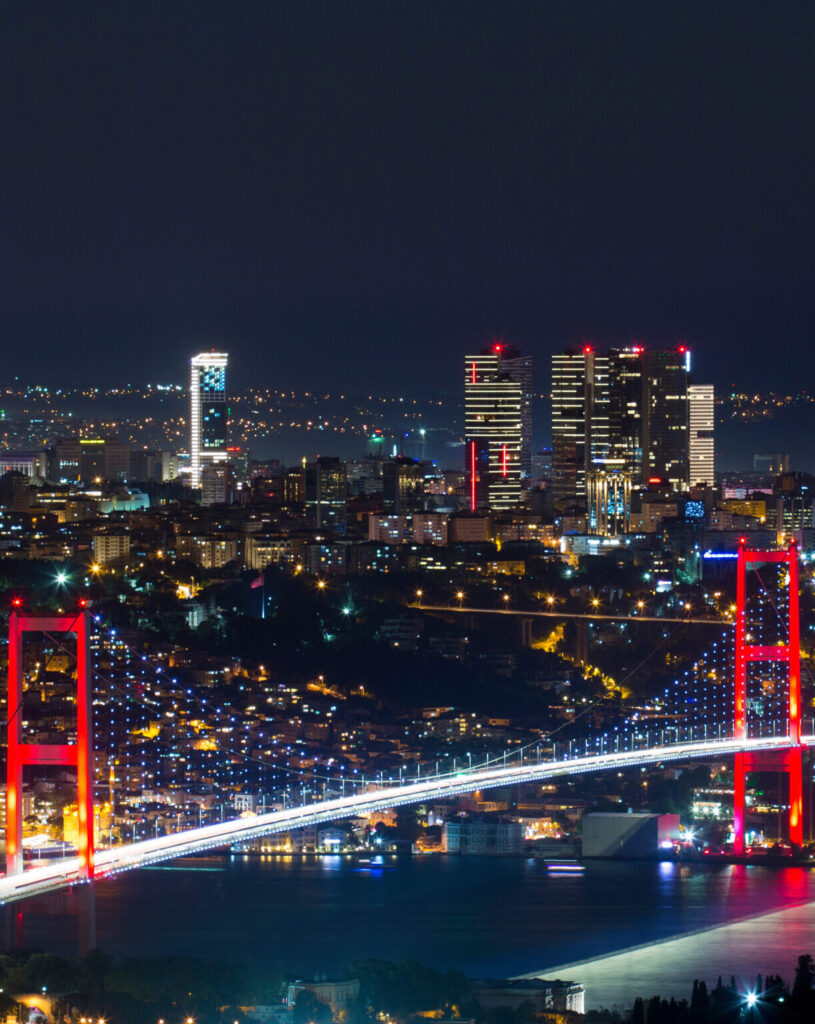
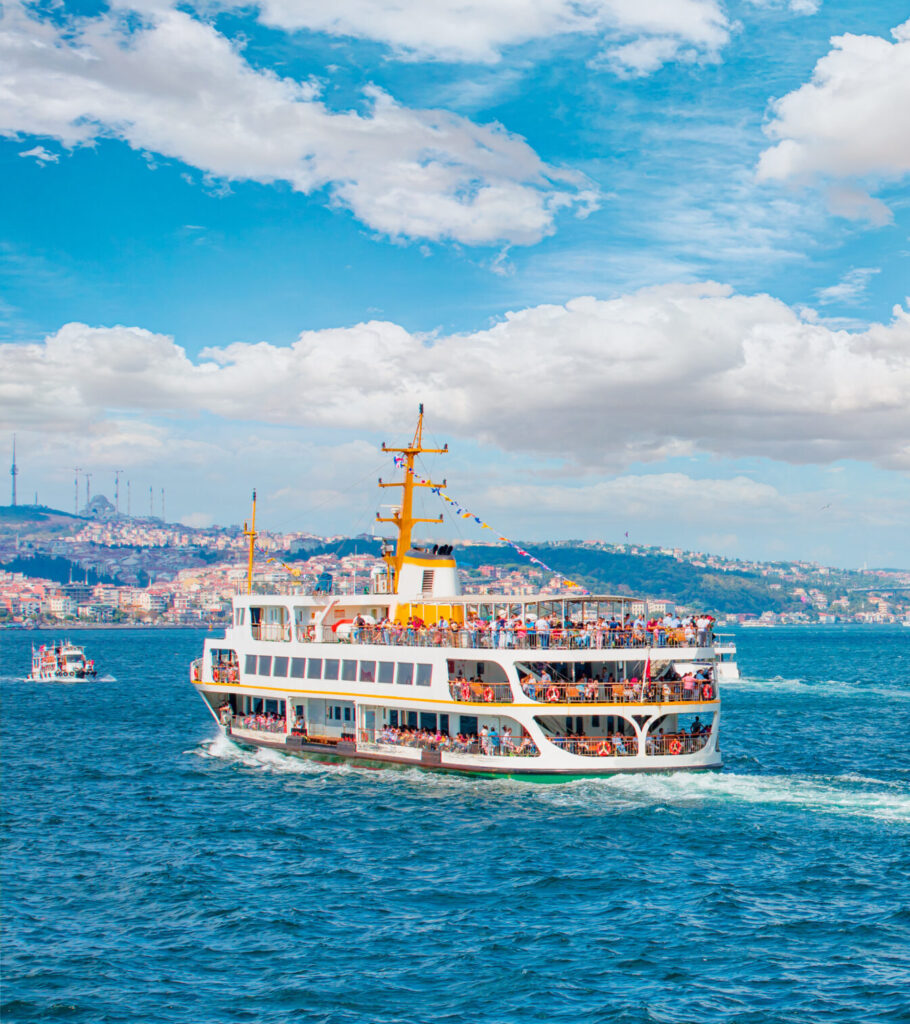
You can see it in the streets, in the way people move, in how neighborhoods evolve, and even in the rhythm of daily life. For 37 years, I’ve watched this transformation up close, adapting to it, learning from it. The Istanbul I knew decades ago isn’t the same as today’s—and that’s exactly what makes it so captivating. What excites me most is that no matter how much you explore, you never feel like you’ve reached the end. Every corner holds a different story, every street a different culture. Just when you think you’ve seen it all, Istanbul surprises you. This city is never “done”—and that’s why, for me, it will always be an endless discovery.
The Story That Astonishes Even the Most Seasoned Travelers
Your tours and storytelling focus on giving visitors a deeper, more meaningful experience. What is one story or piece of knowledge that always surprises even the most well-traveled guests?
Şerif Yenen: One of the most surprising facts for visitors is that Istanbul’s rise as the capital of the Roman Empire was not a given, but a dramatic transformation. Today, we know Istanbul as the historic capital of Rome, Byzantium, and the Ottoman Empire. But few people realize that before this, it was a small town with a population of just 20,000 to 30,000. In 324 AD, Emperor Constantine the Great won the Battle of Chrysopolis and made a bold decision—to move the capital from Rome. At the time, Rome was no longer a strategic center. Political struggles, economic troubles, and the vastness of the empire made governing from there increasingly difficult. But why Byzantium? Constantine had three key reasons:
- Geographic Location – Byzantium sat at the crossroads of Europe and Asia, making it an ideal hub for controlling both eastern and western provinces.
- Defensive Strength – Surrounded on three sides by the sea, it was one of the most easily defensible cities in the world.
- Trade Dominance – The city controlled critical trade routes between the Black Sea and the Mediterranean, giving it immense economic power.
Once chosen, Byzantium underwent one of the most rapid and ambitious urban transformations in history. In just a few decades, it evolved from a minor colony into one of the greatest imperial capitals the world had ever seen. Today, many visitors assume Istanbul was always a major city, but in reality, its size and significance were a direct result of Constantine’s decision. This transformation—turning a small town into the heart of an empire—continues to amaze even the most seasoned travelers.
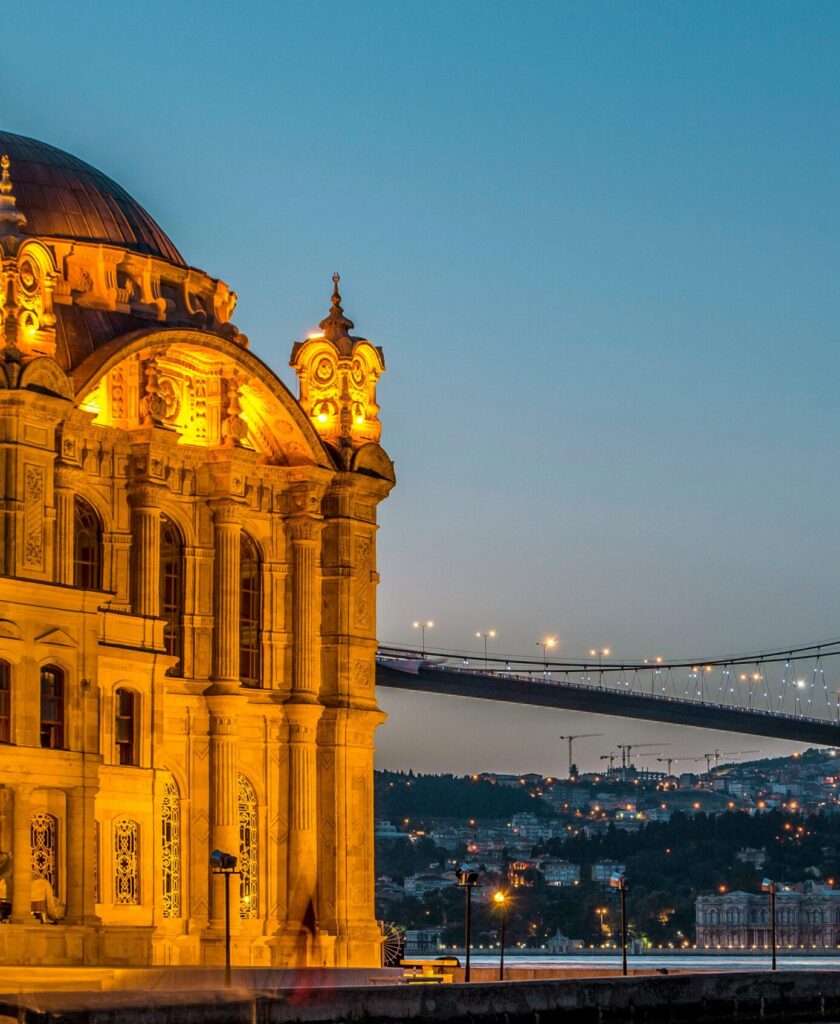
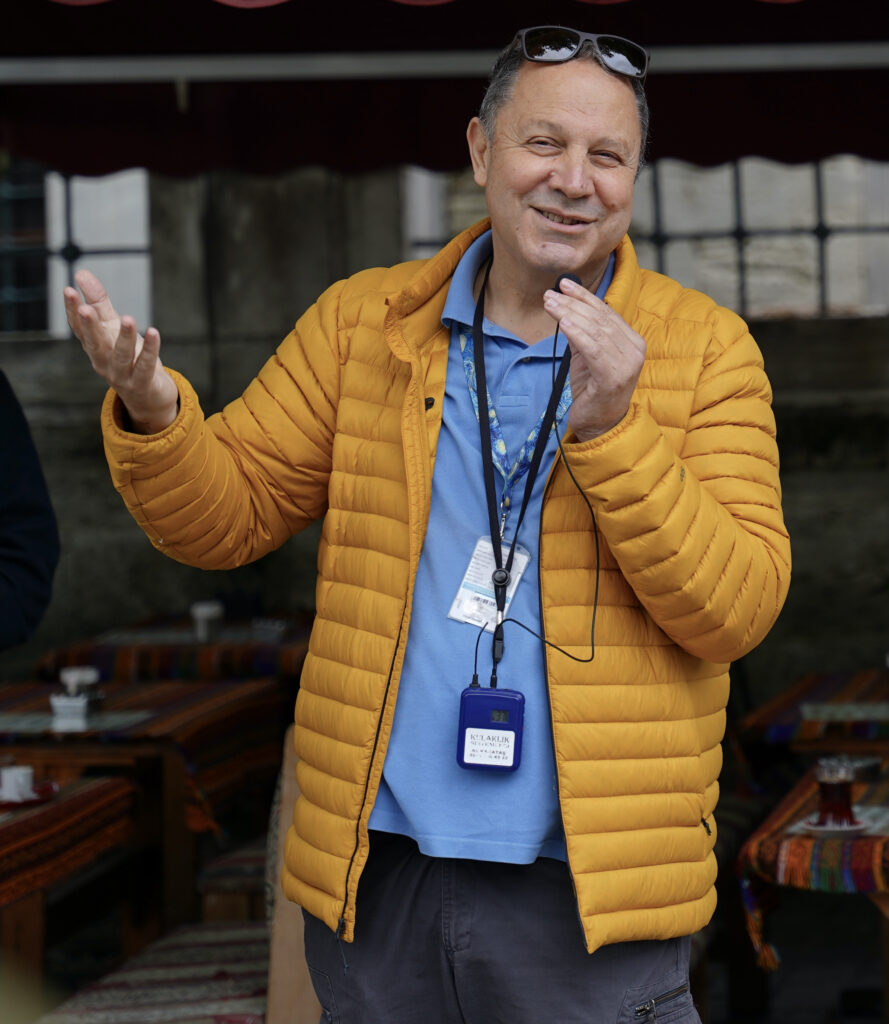
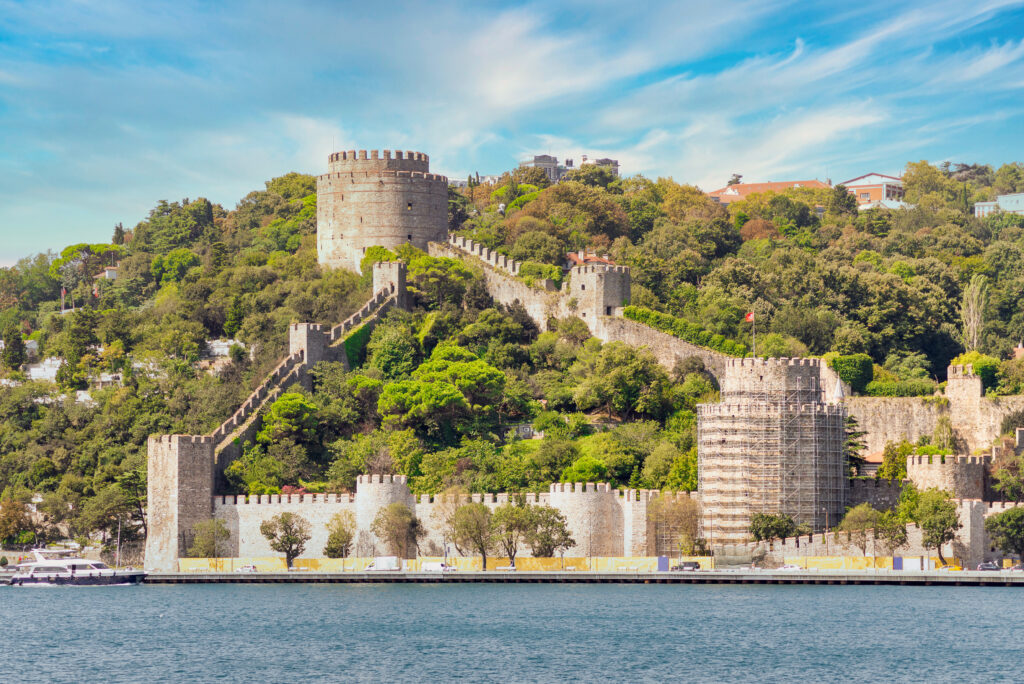
Seeing Istanbul Through New Eyes
Is there a moment or experience in your career that completely changed the way you see Istanbul?
Şerif Yenen: My perception of Istanbul changed profoundly through my interactions with visitors from different cultures. I began my career teaching English in the armed forces, but my passion for history and culture led me into professional guiding. Over the years, I’ve had countless personal encounters with travelers from all over the world, and each time, I saw the city through fresh eyes. One of the most powerful moments for me has been witnessing the sheer awe of foreign visitors as they discover Turkey’s deep cultural heritage. Many arrive with a limited understanding, only to realize that Anatolia has been home to more than 30 civilizations throughout history. Istanbul, in particular, serves as a showcase of this immense heritage. As a guide, I don’t just share knowledge—I also constantly learn from those who experience this city for the first time. Istanbul means something different to every visitor, and seeing their perspective keeps my own view of the city evolving.
Closing Thoughts: The Vision of Serif Yenen
What’s truly remarkable about Serif Yenen is his ability to blend deep historical knowledge with an infectious passion for storytelling. Whether guiding curious travelers through the streets of Istanbul or bringing history to life through his writing and films, he approaches everything with dedication, warmth, and an unyielding enthusiasm for sharing culture.
Through his work as a guide, author, and filmmaker, Serif offers a gateway into a world where the past and present intertwine seamlessly. It’s a world filled with rich narratives, hidden gems, and moments of discovery—just like the journeys that have shaped his career.
There’s no doubt that Serif’s mission to educate and inspire will continue to leave a lasting impact. For those who experience his storytelling, whether in person or through his work, it’s clear that his perspective opens doors to a deeper, more meaningful connection with history and culture.


